Placer Mining Cost
In work on shallow placer deposits by individuals the results differ greatly, both according to the strength and skill of the worker and to the contents of the gravel. Under the best conditions of climate a strong, well-nourished, American digger may be able to raise by the shovel from 10 to 12 cubic yards of […]
The Geometallurgy Book Applied
The study is not intended to be a complete geometallurgy book, but it certainly is a great example of applied geometallurgy. It was conducted on the Caribou deposit in New Brunswick, which is a Zn-Pb-Cu-Ag volcanogenic massive sulphide deposit (VMS). VMS deposits form on the seafloor at divergent plate boundaries from hydrothermal vents (e.g. black […]
Siberian Sluice
The Siberian Sluice and the apparatus at Voltchanka, which may be taken as a type, consists of a head sluice and three secondary sluices, which are placed at right angles to the head sluice, and which leave it at different points and converge to a common centre, where the tailings are discharged. The head sluice […]
Beach Mining
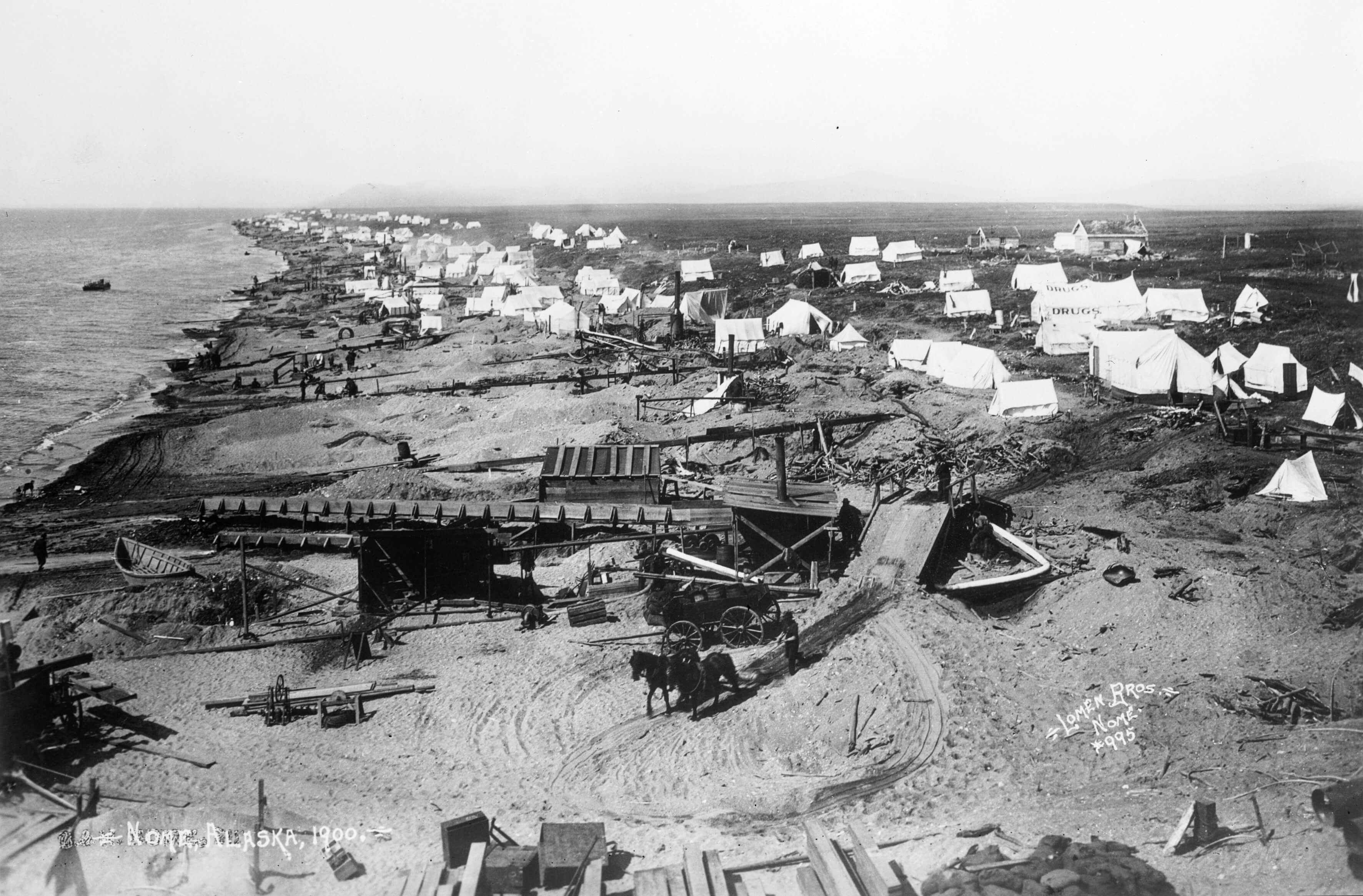
Beach mining is a comparatively unimportant form of shallow placer mining. The sea beaches on parts of the coasts of California, Australia and New Zealand contain small quantities of gold, which have been proved, in all cases in which the matter has been investigated, to be derived from the cliffs, in which the gold is […]
How Does a Gold Dredge Work
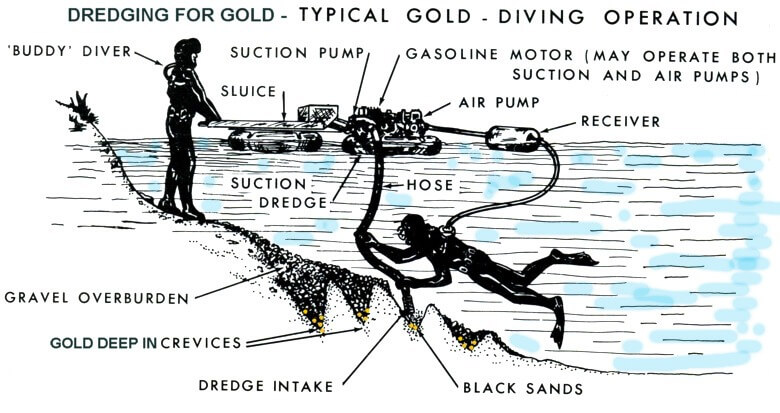
To understand How Does a Gold Dredge Work, we may want to start by looking at California or Alaska. Gold dredging in now practised on the rivers of California, has is now superseded river mining. In river mining, an entire river was frequently deflected from its course so as to lay bare a section of its bed. […]
What is Native Gold
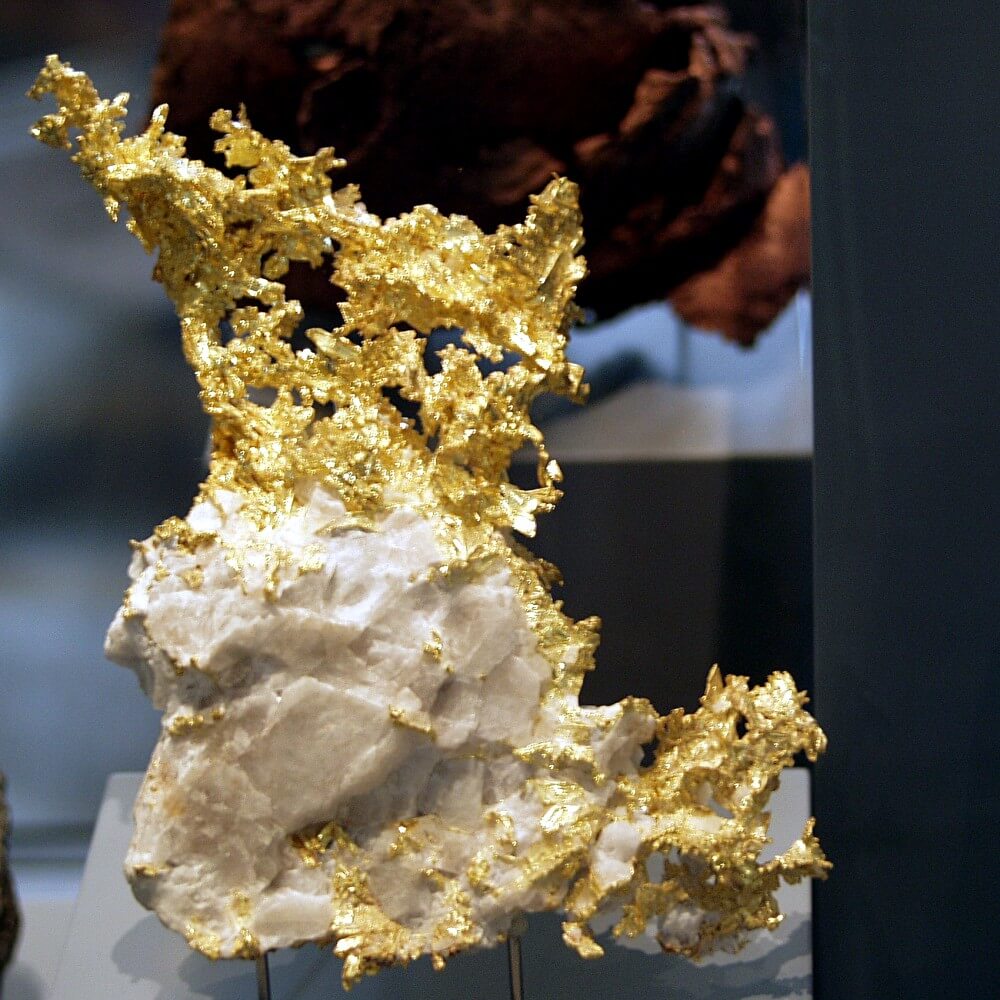
Native gold always contains silver, which occurs in varying proportions, the colour becoming paler with the increase of silver. The finest native gold yet found is that from the Pike’s Peak Mine, Cripple Creek, which was 999 fine. The mean fineness of Colorado gold is, however, only 800. The gold from the Mount Morgan Mine, […]
List Minerals Associated with Gold
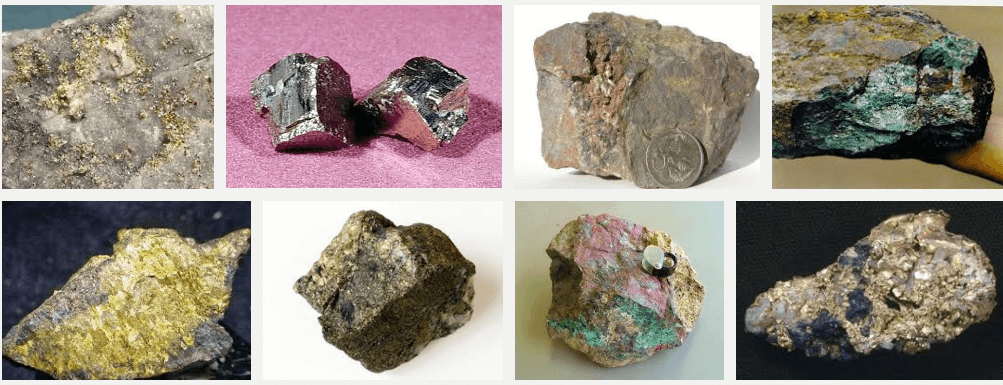
To know what type of rock is gold associated with you must see that the minerals most common in placer deposits are platinum, iridosmine, magnetite, iron pyrites, ilmenite, zircon, garnets, rutile and barytes; wolfram, scheelite, brookite and diamonds are less common. Diamonds are associated with gold in Brazil, and also occasionally in the Urals and […]
How Gold Ore is Formed · Genesis
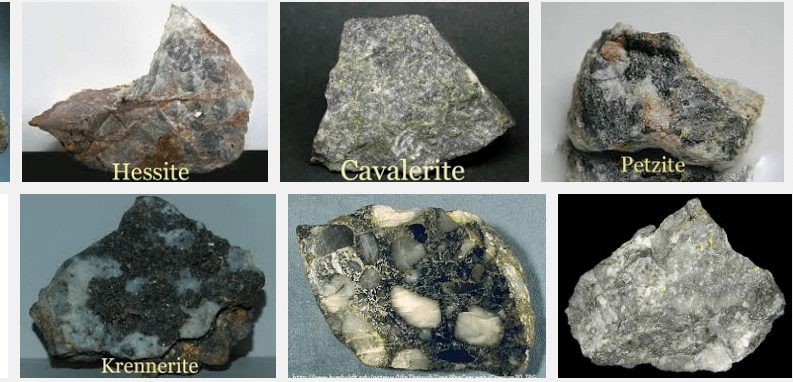
The origin of mineral veins, including those in which gold is contained, has long been discussed by geologists. The old theory that the quartz of veins was originally in a molten condition and was ejected from below into fissures is no longer maintained, although in 1860 H. Rosales brought forward evidence in its favour as […]
Where is the Gold in the World
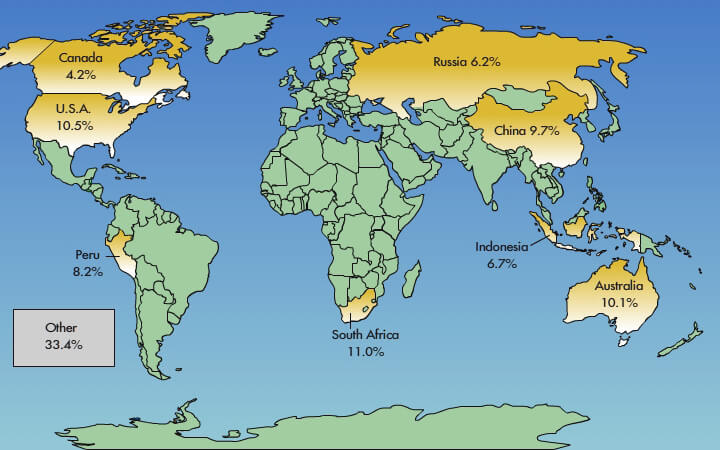
To understand the Geographical Distribution of Gold and where is the most gold in the world you must start with the British Isles, where gold is found in some of the streams of Cornwall and in lodes and river gravels near Dolgelly and in other parts of Wales, in Sutherlandshire, and near Leadhills in Scotland, and […]
Purple of Cassius Preparation

Purple of Cassius was discovered by Cassius of Leyden in 1683. It contains gold and oxide of tin, and is used to colour glass and glazes, various shades of violet, red and purple being thus obtainable. Several methods of preparation are used, of which the following is that employed at the factory at Sevres: Half […]
